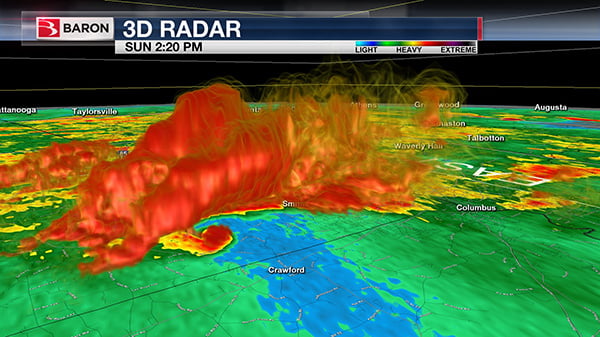Virtually everyone on the planet is feeling the consequences of a changing climate these days. According to the World Economic Forum, natural disasters have increased by a factor of five in the past 50 years. In the last year, natural disasters caused damages of around $27 billion, making increased disaster risk one of the most significant impacts of climate change. Unfortunately, vulnerable countries that are “hotspots” for perilous weather experience storms far more frequently and intensely than the rest of the world and also don't have adequate resources to establish proper Early Warning Systems (EWS).
For meteorology and hydromet agencies lacking the funds to establish these systems or struggling with outdated/inadequate equipment, communicating dangerous weather threats is incredibly difficult. Communication plans and procedures can be missing critical elements. Digitally transmitting basic information is no longer effective. World citizens now ingest information differently.
Times are evolving. Static messages no longer capture your audience's attention. Agencies are now competing in communication channels filled with dynamic graphics and videos. If a message is overlooked or difficult to understand, it impairs citizens' ability to prepare and stay safe.
Take Advantage of Tools Your Citizens Use Most Often
Knowing your audience is the key to understanding how and where to reach the bulk of the country’s population. How do they connect with others and the world around them? Smartphone use is skyrocketing in vulnerable countries. Considering that smartphone use in countries like Nigeria, Columbia, and South Africa averages about 5 hours daily, it becomes clear that the best communication strategy is mobile-focused.
Engage with the Public on Popular Platforms
Knowing what established networks residents use is critical to engaging with your community. What social platforms are most used? What websites do they gravitate toward? What online news sources do they trust most?
Clearly Communicate the Weather Threats
Meteorological agencies—especially in vulnerable countries— are challenged to connect with their communities in an impactful, meaningful way when and where severe weather alerts are needed. Conveying a clear, concise, and simple message increases understanding and retention. Our brains are wired for speed in visual processing, with images understood instantly, a stark contrast to the slower, more laborious task of decoding text. Videos, graphics, and photos are easy to engage audiences and help relay news of an impending weather threat.
The Key to Clear Communications
The communication element of an Early Warning System should start with workstation-based software like Baron Weather’s Lynx. This tool doubles as an analytical and communication tool for agencies needing to quickly convey news of severe weather events.

Lynx Facilitates Communication by:
- Publishing directly to an organization’s Facebook and X (Twitter) accounts.
- Offering a clear, comprehensive picture of weather conditions with high-resolution displays. Lynx’s volumetric imaging technology offers a 3D look inside a storm and a wealth of mapping options, including 3D terrain, to visualize findings for the population.
- Aiding in creating lifesaving, insightful, visually appealing, and sharable messaging. Users can quickly make short videos of weather reports and forecasts with a simple computer (web) camera and microphone. Videos incorporating split screens and onscreen drawing tools can be produced with voice-overs and on-camera presentations.
- Featuring a powerful graphics engine, mapping options also allow users to mix and match styles, plus an array of color palettes and graphics for the user to select. Logos can also be added to images as well.
- Offering various communication options such as automated alerting, push notifications, or e-mail.
- Automating relevant daily weather and critical weather information, which can be continuously populated to websites with the latest radar imagery and forecast— without user intervention. Messages can be distributed around a region or locale.
.jpg)
A powerful tool like Baron Weather’s Lynx enhances operations and communications for government entities by turning weather data into actionable, graphical messages a non-meteorological audience can quickly act upon. Lynx enables global meteorological agencies to transform into entities poised to perform at the highest level, helping communities weatherproof their worlds.
To learn more about the components of an Early Warning System, read about the importance of weather radars as part of an Early Warning System, or learn more about our modeling capabilities that can strengthen your system.
